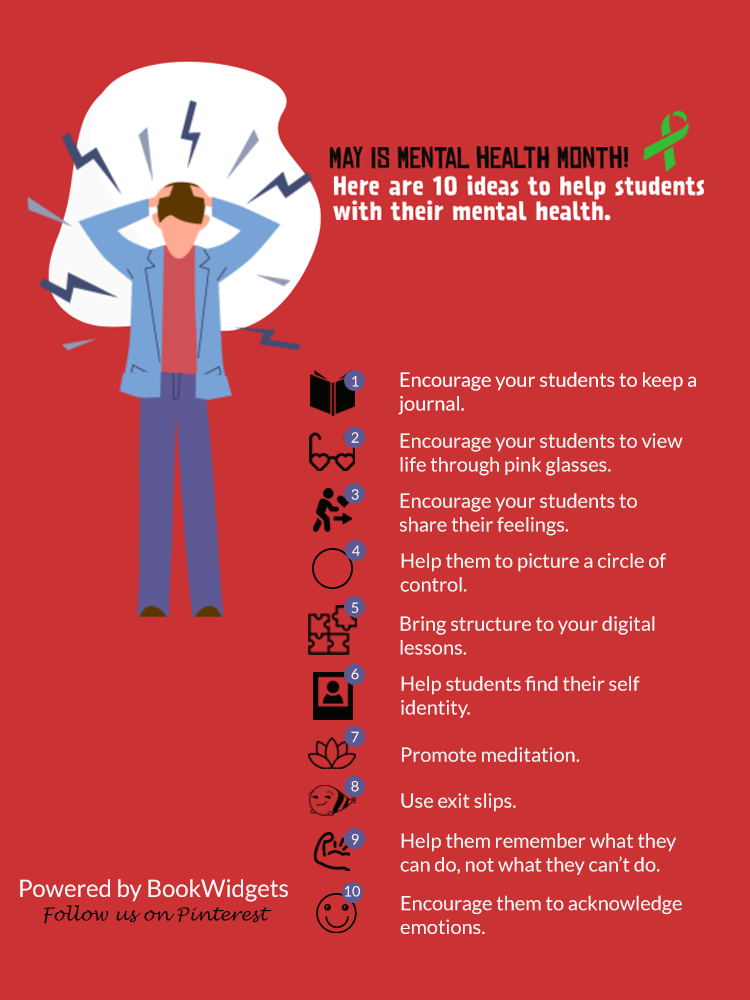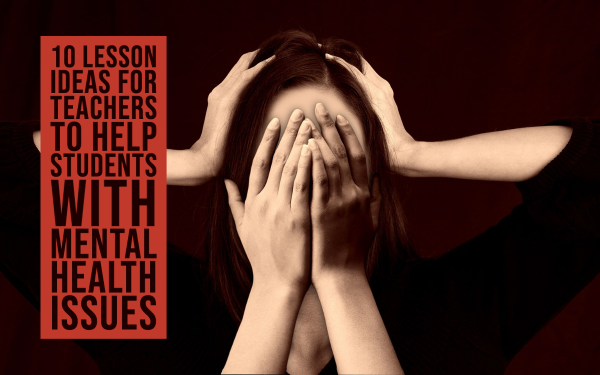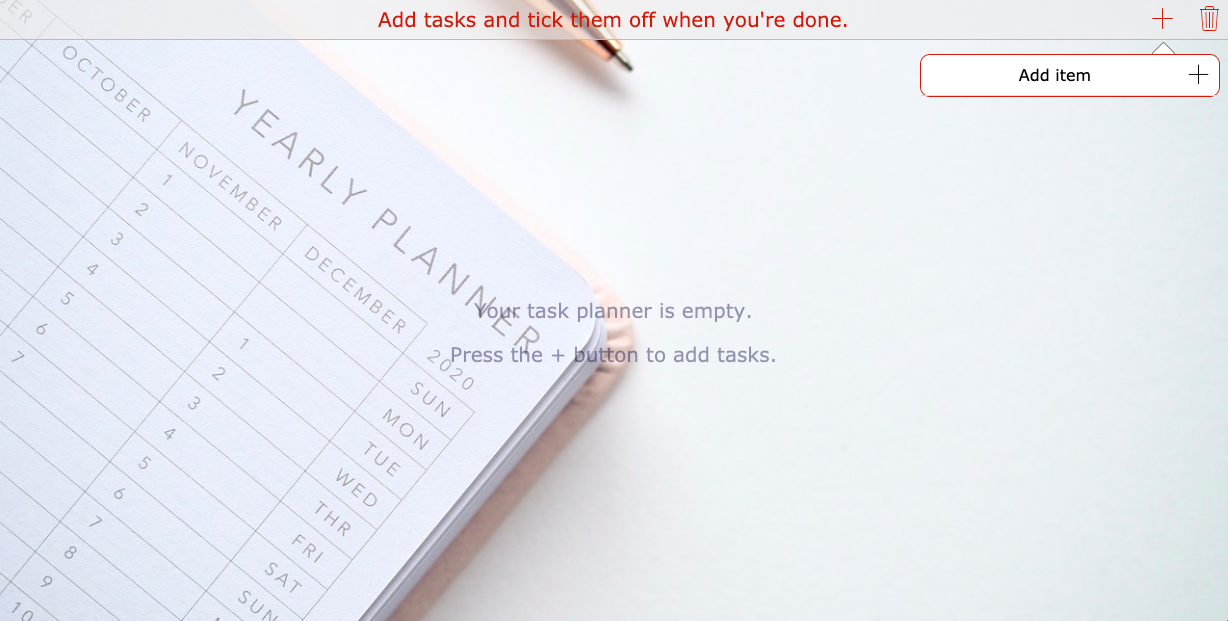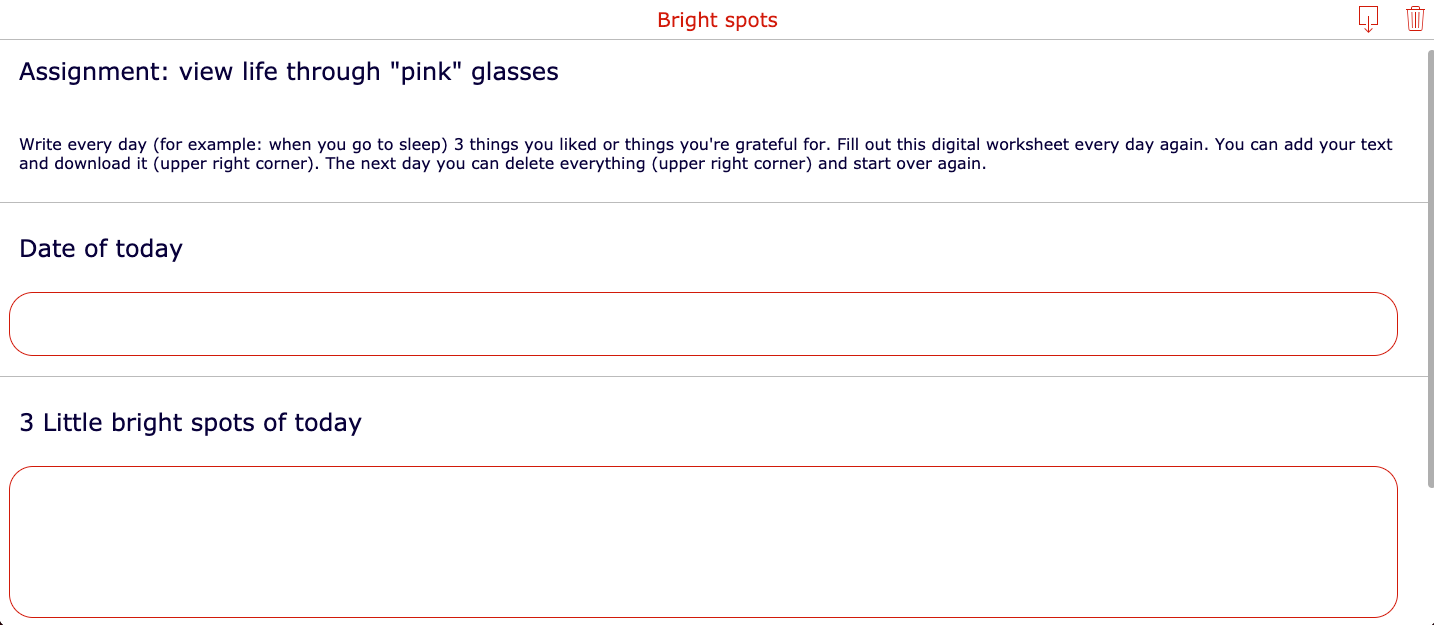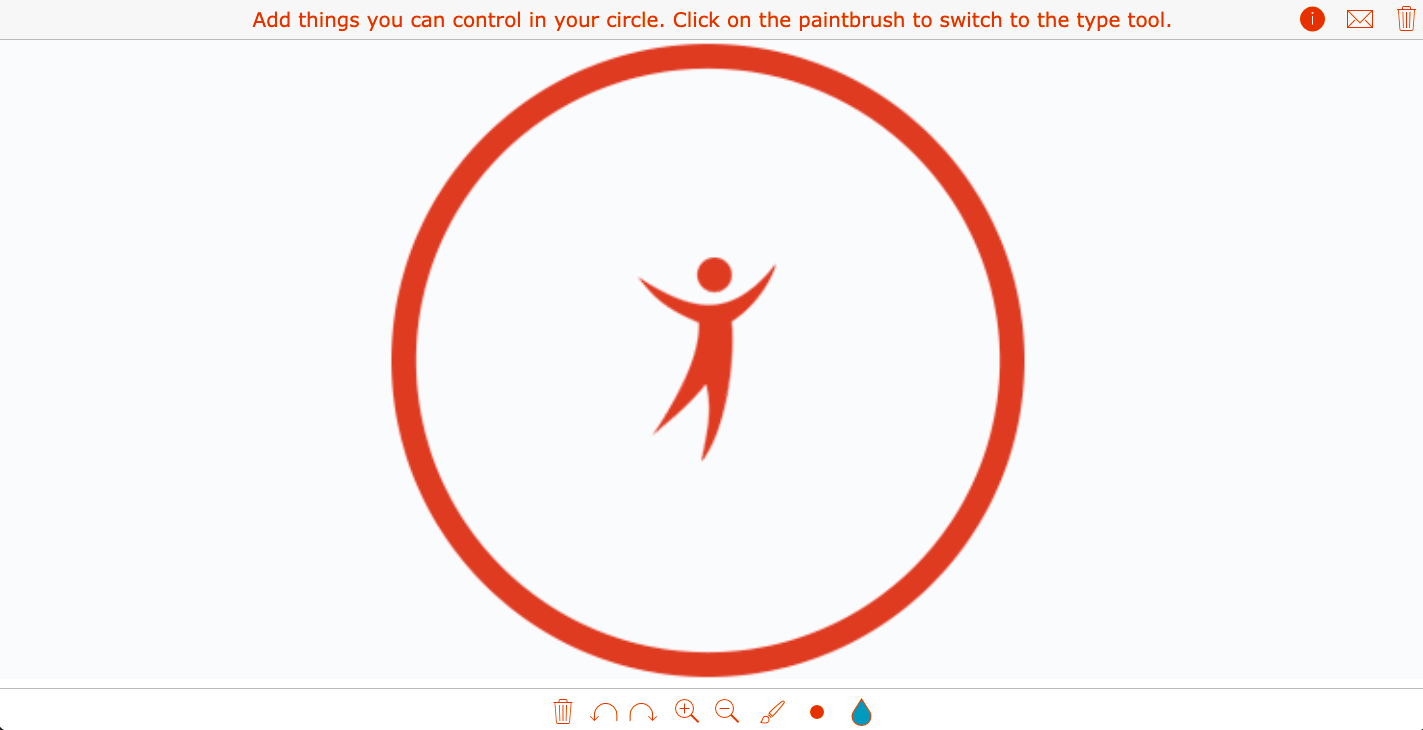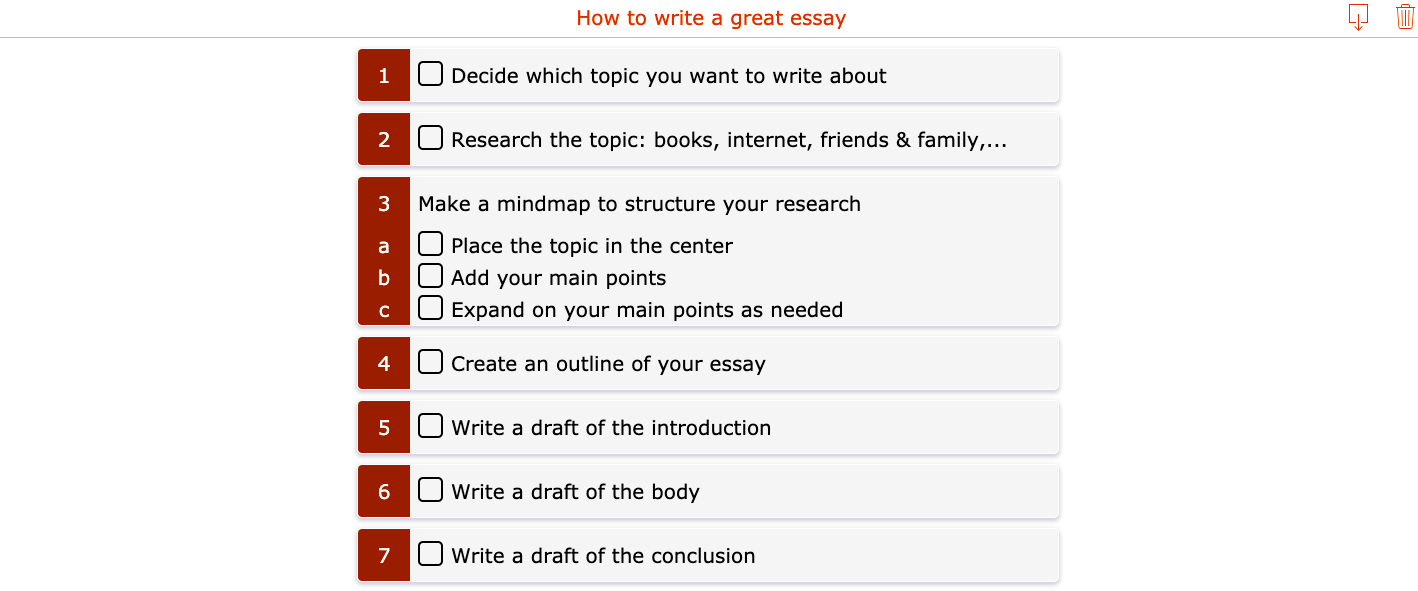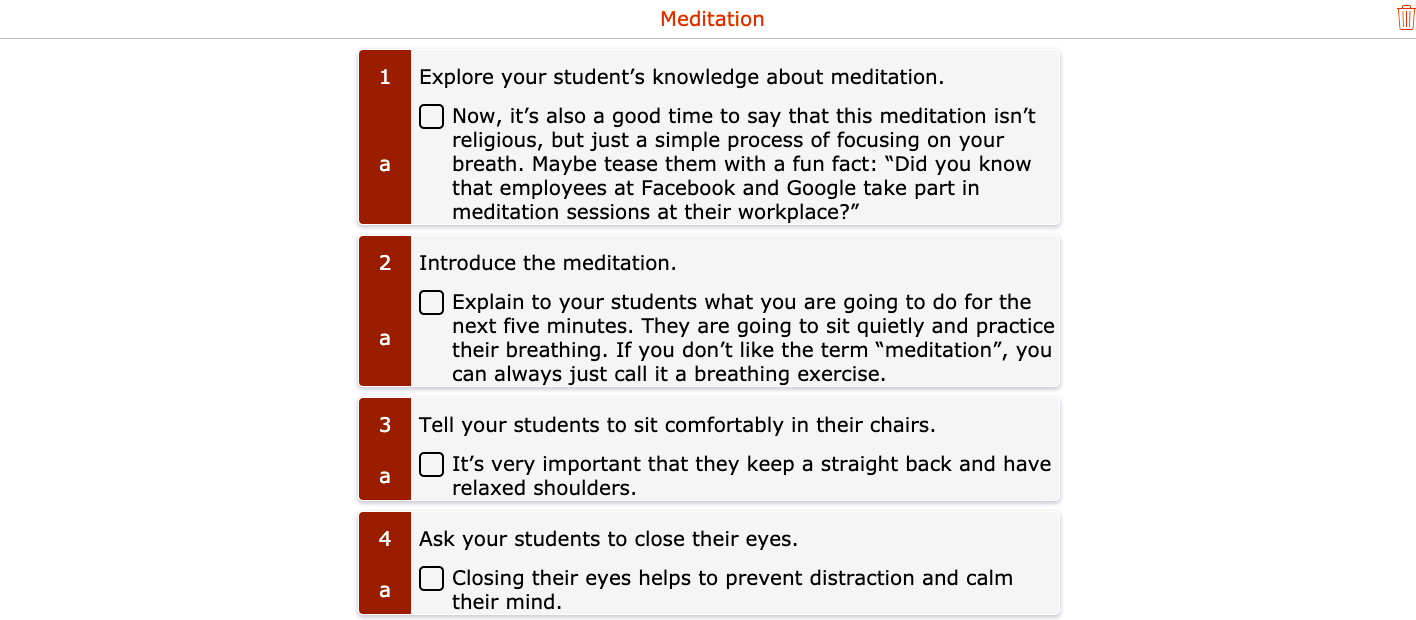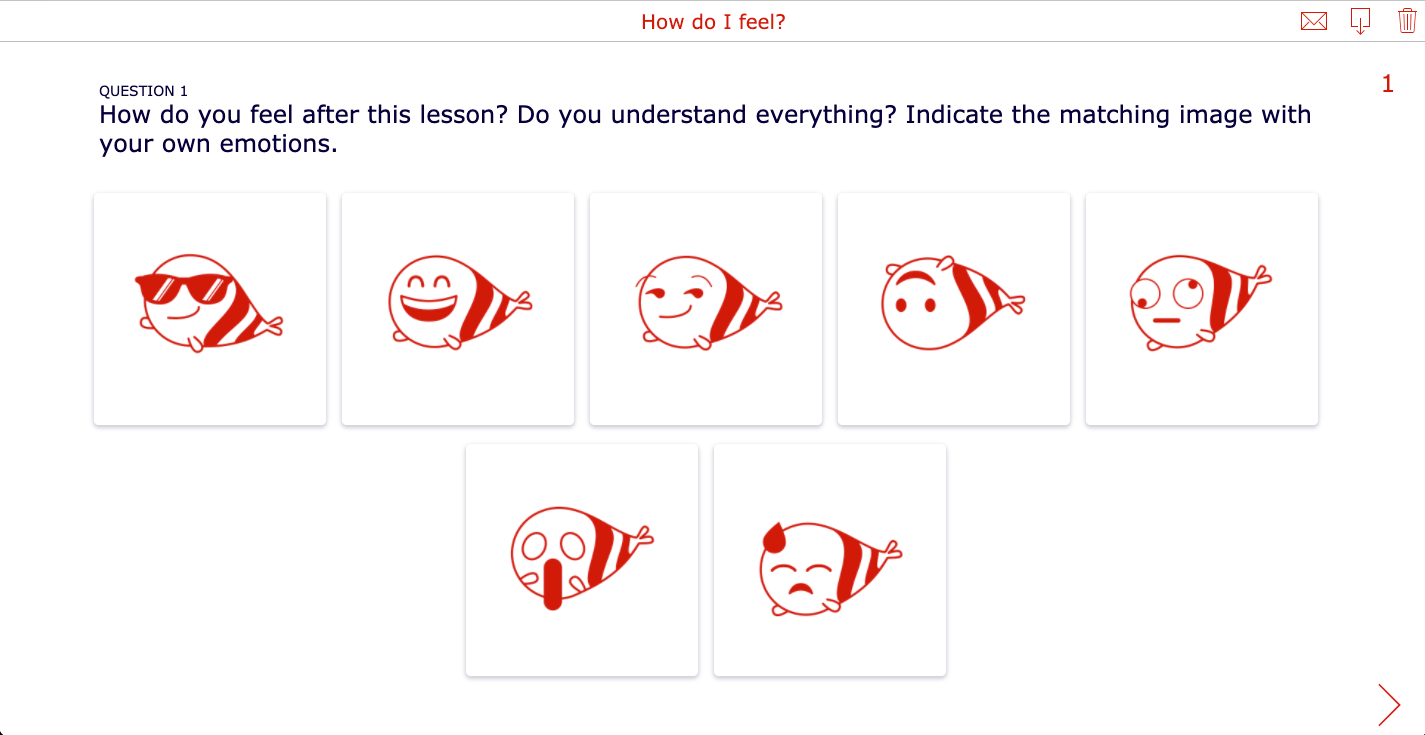10 Lesson ideas for teachers to help students with mental health issues
 Robin Underwood & Lucie Renard —
Robin Underwood & Lucie Renard —
The COVID-19 pandemic has changed how everyone works, studies, and performs their day-to-day activities. While it’s true that people of all ages are feeling the effects, students have arguably undergone the most dramatic routine changes since early 2020.
Remote learning and online schooling have created a significant rise in anxiety levels among students as they grapple with the unfamiliar challenges of remote study, alongside personal and family matters.
The outbreak has academically hindered many students. Others are suffering from a lack of motivation to complete their work, as most of their classes are no longer in person or socially oriented.
More students than ever before are also struggling with mental health issues and the numbers are rising. It’s crucial to be aware of these issues as a teacher and to address them on time as much as possible.
Why remote students are struggling
Thousands of remote students are struggling with anxiety, depression, and uncertainty over the future. Not only that, but many are also facing loneliness and social isolation. They can no longer interact face-to-face with their fellow students in a classroom environment.
Some of the biggest fears students are dealing with regarding online learning and the current world refer to their own personal and economic situations.
Students are worried about their parents’ job security, their own isolation, and some are treading water amid toxic family dynamics. The sudden shift from being able to socialize and communicate with others to no longer being able to leave the house is exceptionally disturbing. Students who aren’t able to spend time with their friends and beloved relatives may be prone to intrusive thoughts, anxiety, depressive episodes, and, in some cases, suicidal ideation.
There are plenty of students who feel that remote classes are not granting them the same quality of education that they received from in-person tutorship. Some find it hard to focus as they have unsupervised access to smartphones, tablets, and computers during class time. Others don’t have a reliable internet connection at home, which makes remote learning a persistent and frustrating challenge. All of these unexpected issues have made adjusting to digital lessons and remote schooling much more challenging for many.
What the statistics say
A study conducted within Californian schools discovered that 32% of students now need access to more mental health resources as a result of the global coronavirus outbreak. Another poll by Gallup noted that by the end of the 2020 school year, 3 in 10 parents said that their children were already experiencing harm to their emotional or mental health due to school closures and social distancing measures.
Science has made it clear that the pandemic is posing unprecedented challenges to students, many of whom are seeking new methods to cope with the pressures of a remote educational environment amid an international health crisis. Researchers have noted that the pandemic will have long-term effects on students in the future, especially on those who previously battled academically.
10 ways teachers can encourage and help struggling students
There are numerous things you can do as a teacher to address your remote students’ mental health issues during this challenging time. Educational experts recommend engaging your class by adding interactivity and motivating them by using smart learning tools.
These are lesson ideas to encourage your students to stay positive during this hard period. Be sure to monitor your students’ mental health and get appropriate help when required.
In the 10 tips we’ll give you below, we’ve shared some resources created with BookWidgets you can share with your students right away. If you want to receive student results, it’s best to already create a free BookWidgets account. You can also just use the ideas and create your own materials.
1. Encourage your students to keep journals
Instruct your students to write down things they’ve been doing, and to add pictures or drawings too. They can also set tasks to challenge themselves with, which they can tick off every day upon completion. The more your students feel they’re achieving positive things with their time, the better they will feel about themselves. This will help foster resilience against the mental impact of the pandemic.
Tool tip: We created an empty planner for your students. They can add their own tasks to this planner by clicking on the “+” in the upper right corner. It’s very satisfying for students when they get to add tasks and “tick them off” afterward. Students can even add images, like drawings, to their tasks.
2. View life through pink glasses
Encourage your students to view life through pink glasses. In the digital mental health assignment below, students have to write down a few “bright spots” or things they liked that day, things they were grateful for. Even the smallest things can be bright spots.
An example: “I’m grateful for the warmth of the sun today. I’m grateful to the person that held the door for me. I’m grateful for my hot coffee in the morning.”
This will help see students the positive things in life without focusing too much on their negative thoughts.
 Tool tip: We created a digital worksheet for your students below. You can just share the link with them.
Tool tip: We created a digital worksheet for your students below. You can just share the link with them.
3. Teach your students how to rate their moods
Explain to your students that feelings of fear, confusion, and even anger at the current state of the world are completely normal. Encourage your students to share their feelings, and highlight the risks of bottling up negative emotions without sharing them. If your students are older, you can use popular TV series or films to help prompt discussions about challenging emotions and healthy responses to them.
 Tool tip: It’s a good idea to start a classroom discussion using GIFs. This takes just 10 minutes of your lesson time but gives you a view of what’s in your students’ minds. Ask your students to find a GIF that represents their mood. Let them post the GIF link in your online lesson (Zoom call, …). Then ask them why they choose that GIF. Here’s a good website to find Gifs. Students can even create their own GIFs as well.
Tool tip: It’s a good idea to start a classroom discussion using GIFs. This takes just 10 minutes of your lesson time but gives you a view of what’s in your students’ minds. Ask your students to find a GIF that represents their mood. Let them post the GIF link in your online lesson (Zoom call, …). Then ask them why they choose that GIF. Here’s a good website to find Gifs. Students can even create their own GIFs as well.
4. Help them to picture a circle of control
Right now, many of your students will feel as though they have no control over what’s happening in the world. However, you can encourage them to look closer and realize that there are aspects of their lives that they can control.
Ask your learners to picture their own circles of control. Help them focus on what they can control on the inside, instead of all the factors on the outside that they simply can’t change. Thinking of all the things they do have control over right now will make them feel more empowered and capable.
 Tool tip: Just share the link to this digital whiteboard below. Students can start adding the things they can control. You can ask them to submit their answers (by clicking on the envelope in the upper right corner). If you have created a free BookWidgets account, students will be able to enter your e-mail address and you’ll receive their work in the Grades & reporting dashboard.
Tool tip: Just share the link to this digital whiteboard below. Students can start adding the things they can control. You can ask them to submit their answers (by clicking on the envelope in the upper right corner). If you have created a free BookWidgets account, students will be able to enter your e-mail address and you’ll receive their work in the Grades & reporting dashboard.
5. Help learners imagine what they’ll be able to do once they can go outside again
Emphasize that lockdowns and social distancing are there to ensure their safety. While learning may have moved from the classroom to a laptop screen, the situation isn’t going to last forever.
Ask them what they would most like to do once the pandemic is over, and share ideas for holidays, extramural activities, and travel.
 Tool tip: You can use Padlet for this. This is a free collaboration tool. All your students can add digital sticky notes with their ideas to an online board. As everyone can see on the board, you’re able to create a collection and students can inspire others with their ideas too.
Tool tip: You can use Padlet for this. This is a free collaboration tool. All your students can add digital sticky notes with their ideas to an online board. As everyone can see on the board, you’re able to create a collection and students can inspire others with their ideas too.
6. Bring structure to your digital lessons
One of the main reasons students are struggling with negative emotions is because they feel behind on lessons, they’re overwhelmed by all the digital learning materials, and all the teachers are just “doing something digital”. This means that students have to adapt over and over again to every single teacher.
That’s why bringing structure to your digital lessons can bring ease to your students’ minds.
Check out this blog post with 5 different strategies to structure digital lessons.
A few tips to structure learning
Tip 1: Make sure the school organizes digital lessons in one particular format. Every teacher needs to be in sync and teach students using the same digital platform and tools.
Tip 2: Start your lesson with a bigger picture. You can create this digital checklist yourself in just a few minutes. Your students immediately know what they are about to learn. They can use the checklist again when they have to study for the topic.
 Tool tip: Check out this checklist below. It shows what the students are going to learn in this lesson AND, it’s also a checklist for them to use when they have to create their own essay.
Tool tip: Check out this checklist below. It shows what the students are going to learn in this lesson AND, it’s also a checklist for them to use when they have to create their own essay.
Tip 3: Lots of lesson formats give a good structure for students to hold on to. Think of using mindmaps, creating learning paths, or just tell your lesson in a story format. Stories are always structured. So why can’t your lesson be a story?
7. Help students find their self-identity
One of the hardest things every student or youngster has to go through is figuring out who they are. It’s just a part of puberty. It’s a hard process and it’s even harder when the pandemic measurements take away the opportunities for students to develop themselves.
They’re not allowed to function in groups, they can’t hang out with friends and they can’t practice a hobby. So how are they supposed to know who they are? What do they like? This can bring forth conflicts within the person.
Take a look at this blog post where we give teachers ideas to help students find their self-identity.
 Tool tip: In the post mentioned above, we suggest using avatar tools. An avatar reflects the looks of the students, and thus the self-image. In a lot of cases, a student can also choose its avatar’s powers.
Tool tip: In the post mentioned above, we suggest using avatar tools. An avatar reflects the looks of the students, and thus the self-image. In a lot of cases, a student can also choose its avatar’s powers.
8. Acknowledge emotions, don’t ignore them
When you see an angry, worried, or sad student in your classroom, it’s important to acknowledge the emotions and react to them by expressing empathy.
Don’t ignore those emotions but move straight into problem-solving. You can start giving advice or make suggestions.
How do you respond to student emotions? Well, acknowledging and expressing empathy means a short sentence naming the emotion, checking whether this is true, and saying that you care about their struggle.
An example: “I can see you are feeling really sad right now. I’m so sorry you are feeling so sad.”, or “I can be totally wrong but you seem kind of frustrated. It must feel bad.”
Keep in mind that you can’t direct this to the student in front of the class. It’s better said quietly, directly to the student.
The effect of acknowledging emotions:
- Students feel the care and they know teachers see them.
- Emotions aren’t dangerous things! You can have them, you can speak about them, and you are still okay. It increases the chance students will be able to identify and express emotions more often.
9. Promote meditation
Meditation is a science-backed method of promoting calm, self-reflective internal states, and it’s suitable for people of all ages.
Your students may not be able to meditate during class, but you can encourage them to do so during their personal time. Teach them grounding techniques by having them look for one thing they can see, touch, hear, smell, and taste, and telling them to breathe slowly and deeply.
 Tool tip: This exercise below shows you how to deliver breathing meditation that students of any belief system can use. It’s a checklist you can use to go through the instructions, step-by-step, from a distance.
Tool tip: This exercise below shows you how to deliver breathing meditation that students of any belief system can use. It’s a checklist you can use to go through the instructions, step-by-step, from a distance.
Here’s the meditation video mentioned in the checklist.
10. Use exit slips
Exit slips or exit tickets are a great way to quickly understand how students are feeling just after your lesson. There are hundreds of different exit tickets.
 Tool tip: We’ve shared an exit ticket with you below. You can just share the link with your students and they can submit it to your e-mail address (if you’ve created a free teacher account on BookWidgets).
Tool tip: We’ve shared an exit ticket with you below. You can just share the link with your students and they can submit it to your e-mail address (if you’ve created a free teacher account on BookWidgets).
Use that knowledge for the next lesson. Create digital breakout rooms and gather students that responded with a negative emotion image. Give them extra instructions on the lesson topic. This way, you are sure all your students understand the lesson content before you move on to the next topic or start building upon previous knowledge.
Wrap up
The pandemic has affected the mental and emotional health of millions of students across the globe. If you’re teaching students remotely, take as many steps as you can to ensure that they have access to the mental health resources they need. Encourage positive, reflective thinking, use interactive remote learning tools in your lessons, and remind them that this upheaval will all be in the past one day.
Author bio: Robin Underwood is a writer extraordinaire for a variety of online publications where she delights her audience with fresh ink angles on topics like E-learning, IT, and gamification.
You probably already know Lucie Renard 😊 Educational blogger and digital marketeer @ BookWidgets.
